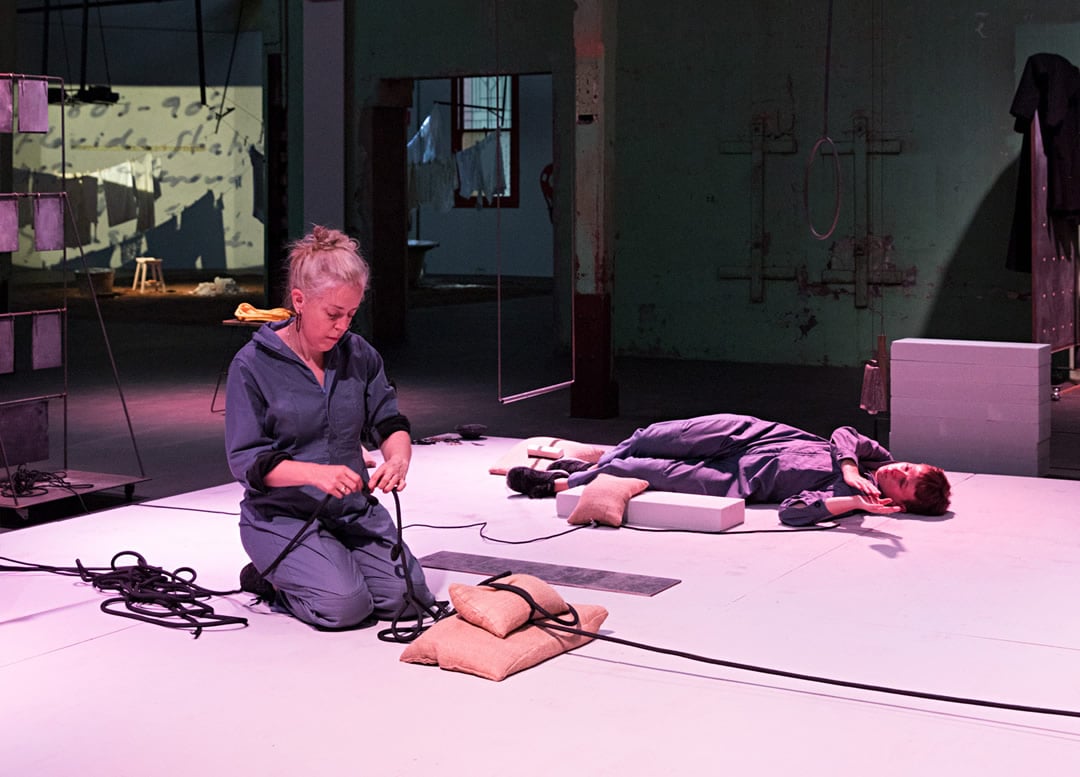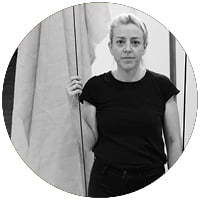Meet the School of Communication and Creative Arts
What do you teach at Deakin?
Katie: My own background is within visual arts and contemporary performance; live-art, video, sculpture, installation practice. At the moment I’m teaching a range of subjects, some are specifically within the visual arts, and other courses are more cross-disciplinary with students enrolled from all over the University. In the visual arts area, I am working with the first-year students in a creative studio class that introduces a range of research strategies and methods of creative practice to students. I also teach drawing, however this unit is open to students from many different degrees to take, so I have students studying everything from cyber-security to nursing in these classes. I really love this about teaching at Deakin, with such a diverse range of students in the classroom. I also teach students studying a Master of Creative Arts. This is a cross-disciplinary group of students who come from all different backgrounds for example filmmaking, landscape design or photography. Some come from non-arts specific educational backgrounds as well, so we make quite a team!
How would you describe your creative practice?
Katie: My creative practice is very eclectic. My work is conceptually driven, and then I go about finding the right art form to suit the concepts I am exploring. This means I am always learning new skills, which now include working with ceramics, dance, video, timber, metal, textiles, ink, watercolour and sound! I have a background in sculpture and printmaking, and my recent exhibitions have mostly been sculptural installation and live-art. I’ve been working on what I call performance-installations, that involve the live manipulation of various elements in an installation within a gallery context or public space. I also make drawings, films and take photographs as part of my expanded research and creative arts practice. Underlying my work is an interest in how human behaviour is reflected by forms and patterns of behaviour and movement, and how bodies hold knowledge of these complex social and cultural systems.

Katie Lee, Set Elements (2019), Performance-Installation, dimensions variable. Photo Clare Rae
Who has been your biggest influence on your career to date?
Katie: The biggest impact on my practice is the arts community that I am part of. I have always been involved with artist-run galleries and working with other artists locally and internationally. Working with others helps push my own work and exposes me to a broad range of art practices, approaches and ideas. I love working collaboratively and at the moment I work with a collective of other Melbourne based artists in a group we call Light and Air and Space and Time (The LAST Collective). Sometimes we make work together, but we more often work together discursively, staging talks, presentations and supporting each other’s practices. We have come together through our shared interest in the conceptual and formal aspects that our work shares (light, air, space, time). There are so many great Australian artists across dance, theatre and visual arts, and as a community all of these practices frame and drive my own art practice forward. Of course, there is a vast number of historical artists that have influenced me. I would have to say the lineage of my sculpture and installation work comes out of the Minimalist art movement and expanded field of sculpture and live performance. Artists from the movement Arte Povera are particularly influential to this trajectory. But as my work is eclectic, the list is too long to mention!
What do you consider your greatest achievement in life?
Katie: My greatest achievement in life is really having become part of the arts community and learning how to stay in the game. Becoming an artist is a very long road and I have worked really hard in developing my own practice and my academic career. I feel really proud that I have managed to initiate projects with other artists and collaborated with artists from all over the world in the development and presentation of projects. Rather than any single moment, I just feel that having managed to sustain my practice over 25 years now, is a great achievement! Recent highlights are a collaborative performance installation in Vienna Austria in 2019 with the Austrian artist Veronika Hauer and a large-scale live performance work at the Abbotsford Convent in 2019.
What has been your favourite Deakin experience?
Katie: I am a brand-new staff member at Deakin, so it is all new and exciting to me! However, in particular I have to say that I am incredibly impressed by how cross-disciplinary the approach across the creative arts is, both from the staff and students. This leads to a really exciting cross-pollination of ideas and practices. I have really loved working with staff from dance, theatre and photography and seeing students engage across these disciplines in their own projects. I find this utterly unique to Deakin, and extremely exciting.
How would you describe the Deakin learning experience for students?
Katie: Deakin is an incredibly inclusive place to study, and the staff are focused on making students experience the best that it can be. I really feel like anything is possible for the students at Deakin, because the culture of the staff is so generous and generative. There is an amazing tech team at Deakin, and together everyone gets very excited about the possibilities for students and the staging of their work. There is a lot of access to different expertise held by the staff and opportunities for students to mix with people from all over the University.
What is your best advice for someone looking to enter a creative career?
Katie: The best advice I could offer someone interested in a creative career is to initiate things themselves! Don’t wait to be asked to dance! I think there is a myth that you are ‘selected’ by someone and ushered into a career. Some people get lucky, and that happens to them, however it is not the only pathway into a successful career in the arts. My own experience is that most of the students I studied with have ended up in creative careers, or at least careers that use their creative arts backgrounds. And most of them have made this pathway for themselves by staging plays, starting galleries and businesses, becoming arts workers or teachers, there are so many different career paths that come from the arts. The problem is that there is no clear road-map to these, and it can be hard to see what the future holds. It’s a real ‘stayers game’. If you love it, you just need to hang in there and have faith that you will make it work. The community is really strong, and there are lots of opportunities as well.
What is it like teaching and studying your discipline online?
Katie: I am so glad to be in the company of my students during this incredibly challenging time. While we miss the face to face contact, we are still together for the same amount of time through platforms like zoom, and I feel like we have really achieved something together by doing our study online together. It has been a real bonding experience! The toughest part is not being able to see each others work in progress. A huge part of learning in the creative arts is through observing other students work, so that has been challenging. However, that we’ve stuck together and got through it is incredible. I feel like we will all look back at this as a really intense, but special time. It has also reminded me how important the arts are to our culture and to our sense of well-being. Although it can be harder to do the practical workshops and classes online, it is still so important to create time and space for processes such as drawing and experimenting with materials. It is surprising what you can find in your cupboards to make a drawing with. And it’s a chance to get some kind of studio set up at home. It is has also provided an opportunity for artists to think a bit harder about how to present their work online. It is a challenge that is not necessarily unique to these circumstances, because we see a lot of artwork online anyway. However many of us have not thought too much about our approach to showing our work online, so that has been very interesting for me to consider in more depth.

Dr Katie Lee teaches across Deakin’s Bachelor of Creative Arts and Master of Creative Arts as well as broadly across the creative arts disciplines.

You must be logged in to post a comment.